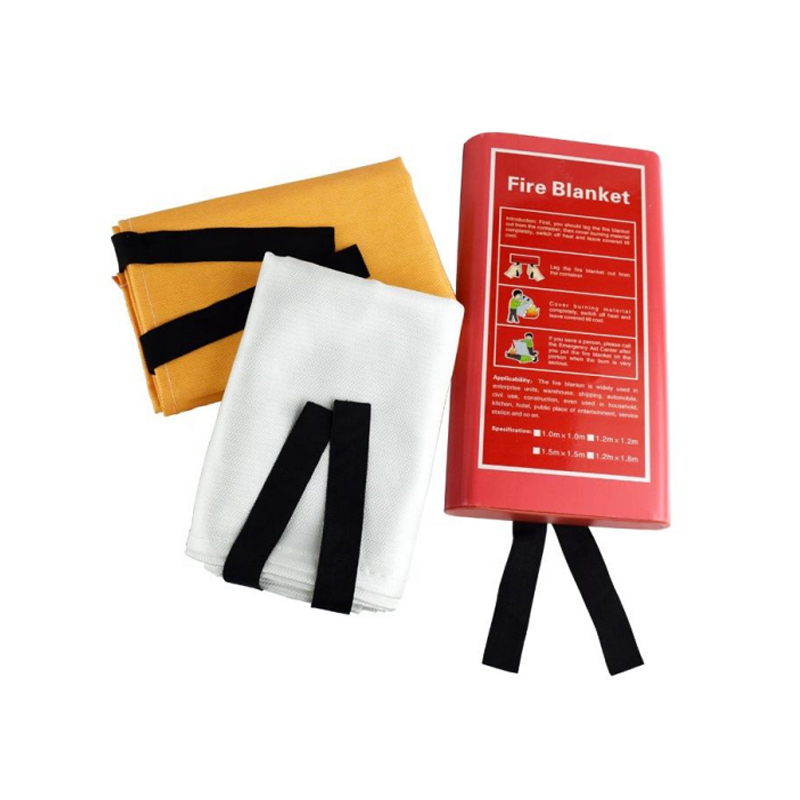Fiber Glass Fire Blanket
Cat:Fire Blanket
The Fiber Glass Fire Blanket is an essential fire safety tool designed to provide rapid response and effective fire suppression for various applicatio...
See DetailsStore in a Dry Place: Ensure that the fiberglass fire blanket is stored in a controlled, dry environment, free from excess moisture or humidity. Moisture can seep into the fibers of the blanket, leading to weakening and potential mold growth. This can compromise the blanket's ability to function effectively in an emergency. Ideal storage environments include climate-controlled rooms with dehumidifiers if necessary. Regularly monitor humidity levels to maintain an optimal storage condition.
Avoid Direct Sunlight: Fiberglass fire blankets are sensitive to prolonged exposure to ultraviolet (UV) light, which can degrade the fiberglass fibers over time. UV exposure can cause the fibers to become brittle and lose their structural integrity. To prevent this, store the blanket in a location that is shielded from direct sunlight, such as in a cabinet or closet. If storage in a sunlit area is unavoidable, consider using UV-resistant covers or protective enclosures to mitigate UV damage.
Keep Away from Chemicals: Fiberglass fire blankets should be kept in environments free from corrosive or reactive chemicals. Chemicals such as strong acids, bases, solvents, and cleaning agents can react with the fiberglass material, causing it to deteriorate or lose its fire-resistant properties. Store the blanket in a separate area from chemical substances and ensure that the storage area is well-ventilated to avoid chemical vapors coming into contact with the blanket.
Maintain Proper Temperature: The effectiveness of a fiberglass fire blanket can be compromised by extreme temperatures. High temperatures may cause the fibers to weaken or become damaged, while low temperatures can make the material brittle and less effective. Store the blanket in a temperature-controlled environment, ideally between 50°F and 80°F (10°C to 27°C), to maintain its structural integrity. Avoid locations near heat sources, such as radiators or heaters, as well as areas prone to freezing temperatures.
Store in a Clean Area: A clean storage area is crucial to preventing contamination and maintaining the fire blanket's performance. Dust, dirt, and debris can accumulate on the blanket, potentially interfering with its deployment or effectiveness. Use a dedicated storage cabinet or shelf to keep the blanket clean and protected from environmental contaminants. Ensure that the storage area is regularly cleaned and maintained to prevent the buildup of harmful substances.
Use a Protective Cover: If the fire blanket does not come with its own protective cover, consider using a clean, breathable storage cover to shield it from dust, dirt, and other contaminants. The cover should be made of a material that does not retain moisture and is capable of protecting the blanket from physical damage. Avoid plastic or non-breathable materials, as these can trap moisture and create a breeding ground for mold.
Avoid Heavy Objects: Do not place any heavy items on top of the fiberglass fire blanket, as this can lead to compression and deformation of the material. Deformation can affect the blanket's ability to be deployed quickly and effectively. Store the blanket flat or in a position where it will not be subject to weight or pressure. Use shelving or storage solutions that provide adequate support without causing undue stress on the blanket.
Regular Inspections: Perform routine inspections of the fire blanket to ensure it remains in good condition. Look for signs of wear, damage, or deterioration, such as fraying edges, tears, or discoloration. Regular inspections help identify any potential issues before they affect the blanket’s performance. Document the condition of the blanket and follow a schedule for inspections to maintain safety and compliance with standards.
